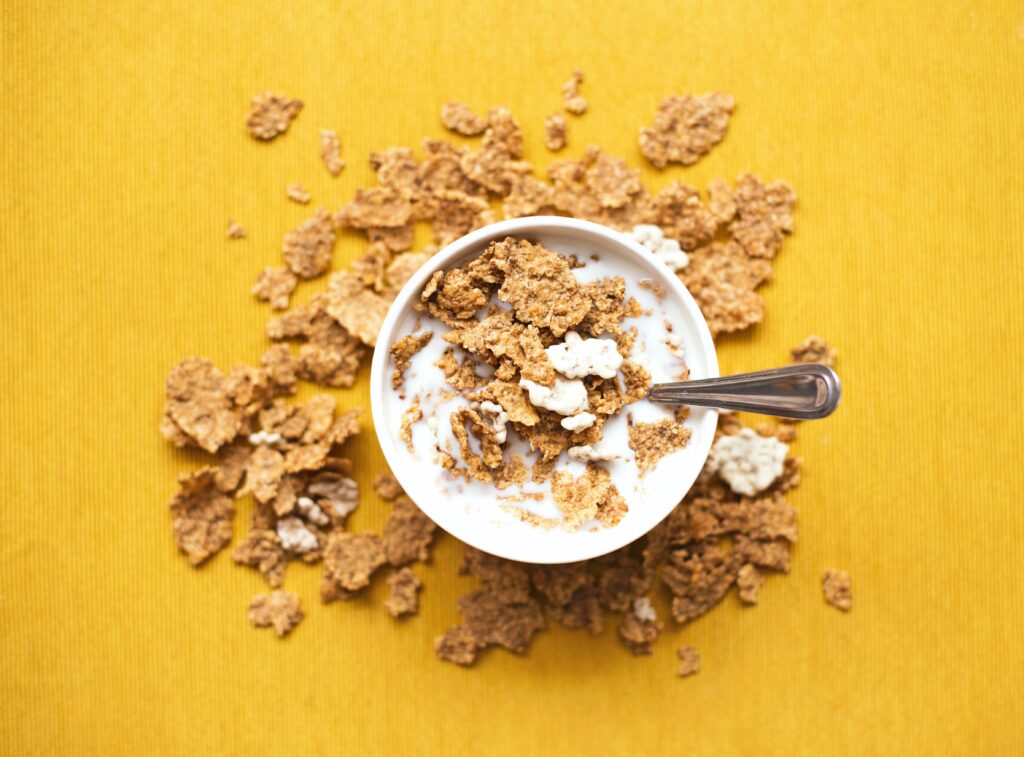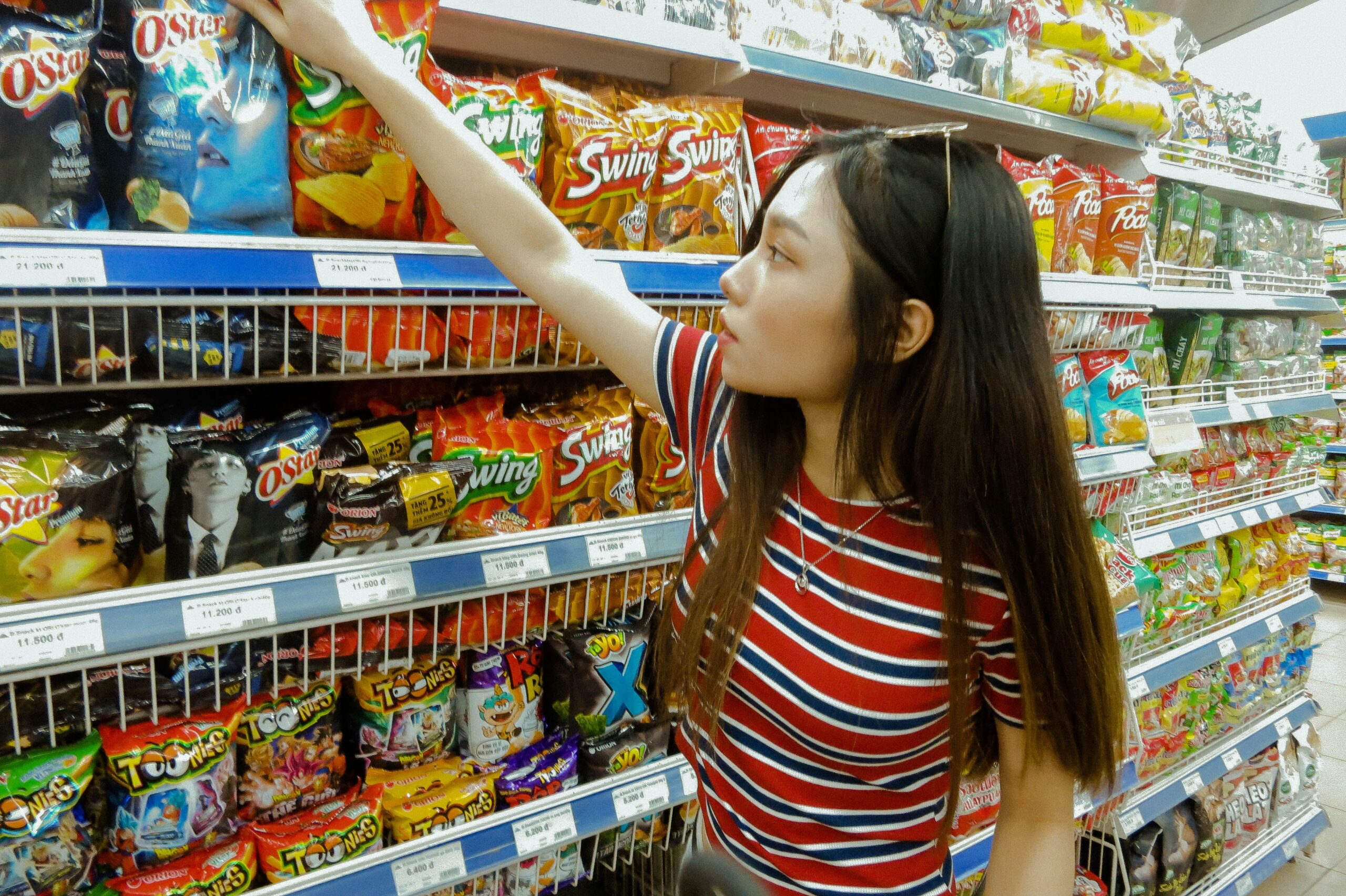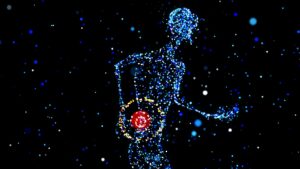Failing to read or properly interpret nutrition labels can be a handicap for your goals. And it’s not your fault. I will arm you with knowledge to screen out when a “healthy” food is actually healthy or whether you are being gaslighted.
What’s the skinny?
- You should always read both the nutrition info and ingredient list before buying anything either online or in a store.
- Nutrition and ingredient labels may seem daunting, but it can be simplified by screening them for relevant data.
- The most important parts of the food labels are the portion size and ingredients. Both of those can easily screen whether you should even buy the product. If one of the first three ingredients is sugar, you should pass.
- Once you understand and measure portion sizes, you will be able to determine what serving size you would actually eat, and whether that would result in blowing your calorie budget for a snack or a meal (see my DAO of metrics post for info on why calorie counting is important).
The Problem with the One-sided Label
Reading food labels is like trying to decipher hieroglyphics. Therefore, it is easy especially when short on time to simply inform our nutrition selections by the claims made on the front of the label.
The front of the label is what faces you in the store, so it makes perfect sense for the most headline-grabbing information to be there, like stating that the product is “fat free,” “low-carb,” or “no sugar.” Labels like “Whole30,” “Paleo Friendly,” and “Keto Friendly” may have less added sugars—or whatever technically qualifies as meeting the requirements of those diets—but attaining those labels is also a huge profit motive and source of brand equity in the market¹ Since regulators do not police many of these claims, there is a lot of latitude for using the “halo effect,” which is a psychological marketing strategy of attaching labels associated with what most people consider attractive or “good.”² Celebrity endorsements are another example of the “halo effect.” This does not mean that the foods with these special labels are unhealthy. It only means that we need to be more aware of our unconscious bias in making these choices.
]That is where reading the back of the label comes in. It takes some time to get the hang of it, but this chapter will give you some broad guidance and after a few more grocery runs you will be able to quickly scan and look for the key information discussed below.
See – The truth behind GMO labeling
Basic key categories
Here are the basic categories of key information you need to scan:
- Meats, eggs, and dairy: USDA organic, Hormone and antibiotic content, Animal living conditions
- Fish: Wild caught, farm-raised
- Portion size
- Ingredients, especially sugar and flour
- Calories
- Macros (carbs, fat, protein)
Animal products – meat, eggs, and dairy
If you are a vegan you can skip this part. Many solid diets include lean proteins and eggs as natural sources of protein (as you can see from my protein bar post, unnatural proteins can really screw you over).
Beef, chicken, and eggs
For beef and chicken you should generall seek out USDA verified organic. To meet this standard, the animal cannot be grown with fertilizers, pesticides, genetically engineered, and that it can only be fed organic feed as opposed to byproducts. Importantly, it also means that the animal cannot be treated with synthetic hormones or antibiotics. Finally, the animal must have access to pasture.
If it’s not labeled organic, but instead says other stuff like “pasture raised,” “grass-fed, ” “no antibiotics/hormones,” or “cage free.” that only give you part of the picture of the above requirements. For example, even if there are no antibiotics or hormones, that gives no insight to how the animal was raised. Same logic applies to pasture-raised eggs – that gives no insight into what those chickens were fed.
What’s the harm in ingesting non-organic? The main issue is the hormones. Ingesting hormones that your body doesn’t produce throws off your own hormones. Hormonal imbalance is a key cause of weight gain and a host of other problems.
Read this article for more of an explanation of what qualifies as organic.
Fish
Generally, wild-caught seafood is caught from a natural habitat (lake, ocean, river) whereas farmed seafood is raised in large tanks. In the store or on your plate, the two could look the same, but are not promised to be equivalent.
Farm-raised is known to be high in contaminants, but that doesn’t mean wild caught is toxin-free – mercury finds its way into natural bodies of waters as well as fish tanks.
Since I recommend tuna for many good quick meals, the best kinds are Wild Planet or Safe Catch Elite – the latter states that its mercury content is trace enough so it’s safe for pregnant women, and this is validated by the American Pregnancy association. Of course consultation with a doctor would be needed as that food is generally a no-no.
Wild Planet also has other good canned types of seafood, like salmon.
More info: Wild Caught versus Farm-raises seafood
Packaged dry food primer
I am not here to tell you not to buy anything in a box or a bag. That’s just unrealistic. I am here to tell you that you can be smarter about reading what is on these packages and make better choices.

Portion/Serving size
Let’s take an example of a popular health food—granola. Notwithstanding all of the “healthy” ingredients, the serving size for granola is ridiculously small. For only one-fourth of a cup, or a palmful, you ingest 146 calories and 11 grams of fat. I don’t know anyone other than maybe a Smurf who would be satisfied with a quarter of a cup of granola. That’s only the size of a shot glass, before any milk. Even a small cereal bowl would look hopelessly empty with that serving amount.


If you aren’t familiar with how much serving sizes are, you should start measuring it out in a measuring cup. This way, you get a sense of how much you need to eat to feel satisfied. It is usually not the stated serving size, unless your stomach is stapled. The same goes for yogurts, ice creams, and dry snacks like pretzels, nuts, and crackers.
Example of “health” food portion sizes
Granola
Let’s take an example of a popular health food – granola. Even if you get the low-carb kind (like Paleola), the serving size is ridiculously small. For only one-fourth of a cup, essentially a palmful, you ingest 146 calories and 11 grams of fat. I don’t know anyone other than maybe a Smurf that would be satisfied with a quarter of a cup of granola. That’s only the size of a shot glass. BEFORE any milk.

Nuts
One-fourth of a cup (again, a SHOT GLASS) is typically the servings size of nuts. Nuts are great for you, but they also have a lot of calories – usually 170-200 a serving depending on what type of nuts. Almonds are usually lower in calories, but nuts like cashews, brazil nuts, and pecans have more. So when you eat nuts, make sure you measure it out in one of your shot glasses. If you don’t have shot glasses, you can buy the cheap disposable pixie cup version. If you want a ballpark, aim for a palmful, but make sure it’s not a handful. For me, it was helpful to measure at first and then later on I could eyeball what the right amount was. To make it more satiating, eat one nut at a time and bite into the nut as opposed to throwing it down without actually tasting it. You also will want to make sure to read the label to see that the nuts are raw as opposed to heavily oiled and salted, like the airplane first class nuts that they bring you heated up.


Calories and macros
After looking at the quantity, you will want to read the calories and macros (i.e., fat, protein, carbs.. The higher in carbs in a packaged food, the more likely those calories come from sugar. You will also want to note the calories and calories from fat, including saturated fat. Saturated fat is the worst kind and responsible for cholesterol and heart disorders. Also, if the overall calories from fat are over half, and it’s not an avocado or a natural source of fat, you may want to consider skipping it.
For more on calories, macros, and how to measure them intelligently, read my DAO of metrics post:
I already covered net carbs, carbs, and fiber in my protein bar post (see below), but for a quick recap, you want to make sure you don’t get a product exceedingly high in fiber (i.e., over half your recommended intake of 25g) especially when its purpose is to make the product “low carb”. You can access that post here:
Ingredient label
The key fact here is that the manufacturer has to list the ingredients in order of predominance. So what’s in the first three items is especially key. Let’s look at some items that commonly appear.

Sugar and its many wardrobes
There are so many outfits sugar wears. As a general matter, if processed sugar is one of the first three ingredients on the package, you should consider skipping it. Here is a list of words synonymous with sugar:
white and brown sugar, cane sugar, coconut sugar, fructose, dextrose, sucrose, succanat, corn syrup, high fructose corn syrup, honey, malt syrup, cane juice, cane syrup, rice syrup, barley syrup, maple syrup, molasses, turbinado, agave, and fruit juice concentrate.(source)
You also need to check how much of the sugar is "added" sugar. If that number is over 6g, you want to reconsider. This is especially important for foods like yogurt, which often add sugar to take away the natural tangy taste. This is often presented as fruit mixed inside, but is usually some variety of fruit and fruit juice and added sugar.
Also watch out for the following sugar substitutes:
sucralose, maltitol, Acesulfame K, erithryol, sugar alcohol
These sugar substitutes are mostly artificial sweeteners. In my protein bar post I discussed the jedi mind tricks that these play on your body, leading you to crave more sugar and become insulin resistant, making you store more fat. and sugar alcohols “fake” your body out. The only exception seems to be stevia, which actually has been shown to better regulate blood sugar levels, and monk fruit.
Whole wheat and its imitators
Eating whole grains is good. Whole wheat is a whole grain. But just because the ingredients has the word “wheat” that doesn’t mean you are getting anything better than Wonderbread.
Ingredients that are actually whole green or whole wheat
- Whole grain [name of grain]
- whole wheat
- whole [other grain]
- wheatberries
Ingredients that may not contain whole wheat grain:
- wheat
- stoneground
- Multigrain
Wait, what? Multigrain is supposed to be good...like multigrain bagels? Nope. It only means more than one grain. Including white refined grains.

Ingredients that have refined white grains and should be avoided
- enriched wheat flour
- wheat flour
- bran
- wheat germ
Best quality bread products
I am a fan of Ezekiel 4:9 (you have seen my meal plans). Their bread is made from “sprouted grains,” which uses the whole grain but undergoes a process that breaks down the proteins and carbohydrates in the grain. It also is more low-carb. Ezekiel also make english muffins and cereal. You can also get sprouted grain bagels at Starbucks and Panera, who have caught onto the trend.
What story the label can reveal - a case study
Let me takes some examples of two popular health foods - Kashi Golean cereal and Catalina Crunch. I am not picking on these in particular - in fact, these are really some of the healthiest cereals out there. This is only an example to show you that you can be easily misled into snarfing down half your daily calorie intake if you aren't careful.
"Healthy" Cereal
Cereal has a reputation for being pretty unhealthy, but there are companies that want to make it healthy because it is so convenient and that appeals to busy people. Just add milk and you are good to go!
Enter two kinds of healthy cereal - Kashi GOLEAN, which is advertised as made with whole grains and containing more protein than an egg. Then, there is Catalina Crunch, which blew up on Instagram as the first "Keto-friendly" cereal. You can read more of the rules of the Keto diet in my summary here:
Label translation
The first thing you may notice is that both labels have super particular fractional measurements. This isn't an accident. It's the measurement that gives the best optics. You scan and think, wow, less than 100 or 200 calories. Good to go, right? When you see start seeing fractions on labels, that is a sign to slow your roll and activate your BS detector. Let’s look first at the Kashi label:
Kashi Golean cereal
INGREDIENTS: Soy Grits, Kashi Seven Whole Grains & Sesame (Hard Red Wheat, Brown Rice, Whole Grain Oats, Triticale, Barley, Rye, Buckwheat, Sesame Seeds), Evaporated Cane Juice Syrup, Corn Meal, Corn Flour, Soy Protein, Wheat Bran, Oat Fiber, Corn Bran, Honey, Evaporated Cane Juice, Natural Flavors, Calcium Carbonate
When you see start seeing fractions on labels, that is a sign to slow your roll and activate your BS detector.
Soy grits are very refined soy product; and more predominant than the whole grains. Even though it’s good that it has whole grains, it also has THREE different kinds of sugar, and refined product like corn meal and corn bran. 8 grams of sugar is about two teaspoons, but upping the portion size could double that amount of added sugar.
Serving size: 1.3 cups
Calories: 180; Carbs 40g; Fat 2g; Sugars 8g.
Most people who do a “pour” are probably really eating 2+ cups, so multiply all those stats by two to get a true sense of the information.
Catalina Crunch
This cereal comes in a pouch, a rather small one that costs about 10 bucks. But for low-carb and no sugar cereal, worth it, right Here are the ingredients in the cinnamon flavor (it also comes in maple waffle and dark chocolate):
Ingredient List: Organic Yellow Pea Protein, Potato Fiber, Non-GMO Corn Fiber, Chicory Fiber, Acacia Fiber, Guar Gum, Turmeric), Tapioca, Organic Sunflower Oil, Cocoa, Baking Powder, Natural Flavors, Sea Salt, Calcium Carbonate, Vitamin E, Organic Monk Fruit.
So as you can see lots of fiber, which will make you want to investigate the fiber amount per serving. The other think to note is tapioca, which is a starch commonly used in paleo and keto products because it comes from the cassava plant as opposed to a grain product. That’s also why cassava flour is such a big deal for these products, making it possible to have pancakes and pretzels and cookies. The only thing about those, like this cereal, is that the calories are still high. Let’s look at the nutrition info:
Serving size:3/8th a cup (WTF, who measures that)
Calories : 90; Fat: 4g; Protein: 8g; Carbs: 12g-7g fiber =5g net carbs
So for about a handful of cereal, you can have low carb, low calorie and no sugar. This is less than half a cup. If you have a measuring cup and measure that out, you will see that is barely anything.
So you will want to assess whether you buy not based on the serving size, but how much you realistically will eat. It’s not that realistic to measure 3/8th or one and 1/3 of a cup all the time - the point of the food is convenience.. Another alternative would be to have the serving size (or appx), and have it with a high volume, low calorie food like berries or yogurt.
Key takeaways
Reading labels can feel overwhelming but once you learn a few basic principles it is easier to spot red flags and make better judgements.






